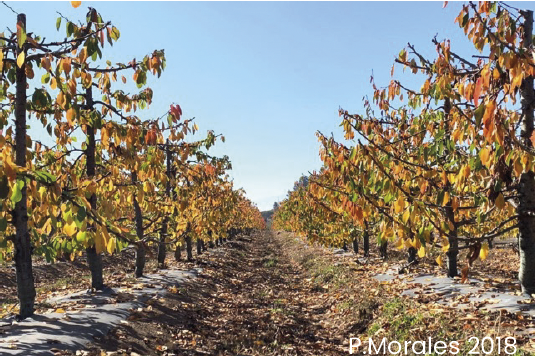A generous summer for cherries made in Germany: the first estimates point to a 41% production increase compared to 2024, and +10.4% compared to the average of the past ten years.
It will be a fruitful summer for German cherry growers. According to the first official estimate released on 10 June 2025 by Destatis – the Federal Statistical Office – Germany is expected to harvest 49,900 tonnes of cherries (sweet and sour), marking a significant increase compared to the disappointing 2024 crop, which stopped at 35,400 tonnes.
This represents a 41% year-on-year increase and a solid +10.4% compared to the 2015–2024 average (45,200 tonnes).
Süßkirschen on the rise
The main driver of this recovery is the sweet cherry segment, with an estimated harvest of 38,200 tonnes – up 16% from the ten-year average and 36.8% higher than the difficult 2024 season.
The outlook is positive across all regions, supported by favourable weather conditions during the spring bloom, with no late frosts or heavy rainfall to affect fruit set.
Among the top producing Länder:
- Baden-Württemberg, the national leader, is expected to harvest 18,900 tonnes from 2,600 hectares, up 6.2% from 2024;
- Lower Saxony forecasts 3,700 tonnes from 500 hectares, showing strong growth (+24.1%);
- Rhineland-Palatinate surprises with 3,600 tonnes (+72.3%) from 700 hectares, ranking third nationally.
In total, Germany's sweet cherry cultivation area amounts to 5,700 hectares.
Sour cherries: clear recovery
Sour cherries (Sauerkirschen) are estimated at 11,700 tonnes – a 56.6% increase compared to 2024, though still 4.5% below the 2015–2024 average (around 12,250 tonnes).
Here too, the mild spring benefited the trees, although regional trends were uneven.
66% of the cultivated area for sour cherries (about 1,500 hectares) is concentrated in three regions:
- Rhineland-Palatinate, leading with 460 hectares, expects a harvest of 3,700 tonnes – nearly double 2024’s result (+91.9%);
- Saxony, after a disastrous 2024 (only 100 tonnes), anticipates a major rebound with 1,800 tonnes;
- Baden-Württemberg, on the other hand, records a sharp drop from 3,900 to 2,700 tonnes (–31.6%).
A look to the future
With 2025 shaping up to be a recovery year for German cherry growing, industry players look to the future with more confidence in production stability, while remaining aware of climate vulnerabilities.
Regional variations highlight the importance of resilient farming techniques and careful monitoring of phenological phases.
If favourable conditions persist, Germany could strengthen its role in the European fresh cherry markets.
Source: fruitnet.com
Image source: FV Photography/AdobeStock
Cherry Times – All rights reserved












